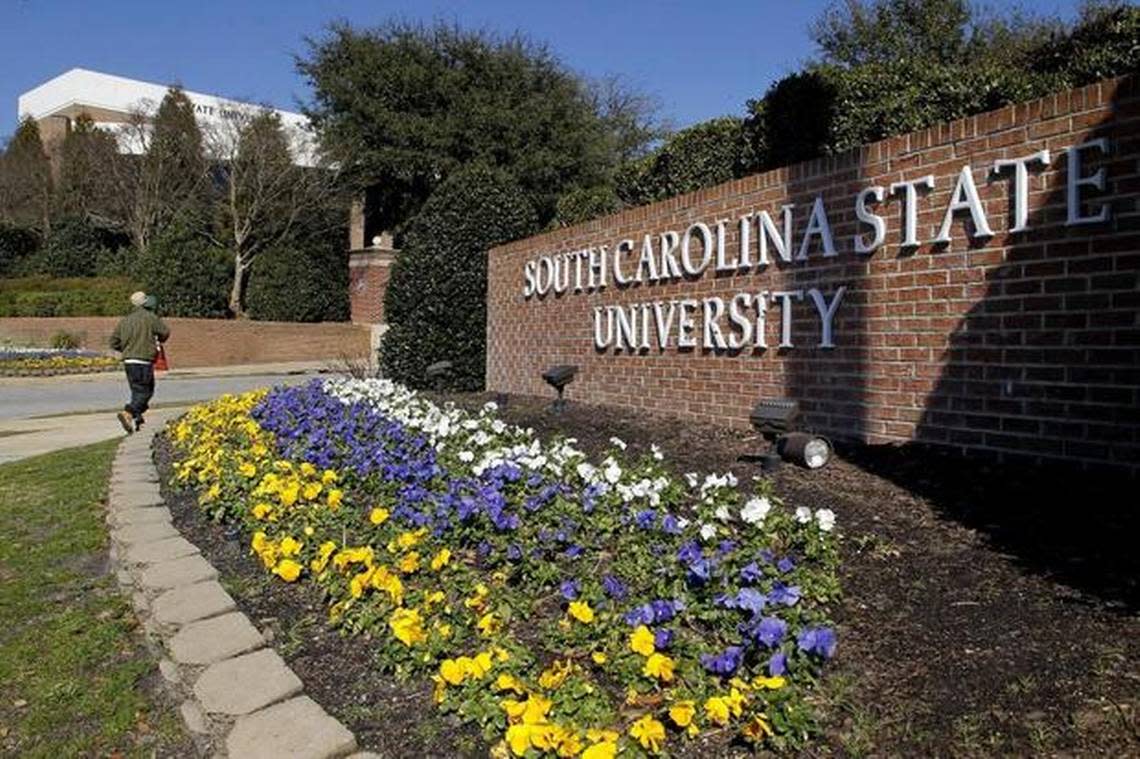South Carolina owes S.C. State University $500 million, federal government says. Here’s why

- Oops!Something went wrong.Please try again later.
- Oops!Something went wrong.Please try again later.
South Carolina State University, a land grant school and the only publicly-funded, four-year historically Black college in the state, has been systemically underfunded for decades and is owed nearly $500 million, according to the Biden administration.
U.S. Superintendent of Education Miguel Cardena and U.S. Secretary of Agriculture Thomas Vilsack are calling on the state to make a change.
In a letter to Gov. Henry McMaster, Cardena and Vilsack said based their claim on calculations using data from National Center for Education Statistics over the last 30 years.
“The longstanding and ongoing underinvestment in South Carolina State University disadvantages the students, faculty, and community that the institution serves,” Cardena and Vilsack wrote in the letter. “It is our hope that we can work together to make this institution whole after decades of being underfunded.”
During the Reconstruction era, the Second Morrill Act of 1890 was aimed at former Confederate states to try to fix discrimination, according to the National Archives. It required the state to open land-grant institutions to serve Black students, with investment equitable to the land-grant institutions created in 1862, including funding.
Land grant universities have been designated by their states or Congress to receive funding under the Morrill Acts of 1862, 1890 and 1994, according to the Association of Public and Land Grant Universities. Their original mission was to teach agriculture, military tactics, and the mechanic arts.
“South Carolina State University, the 1890 land-grant institution in your state, while producing extraordinary graduates that contribute greatly to the state’s economy and the fabric of our nation, has not been able to advance in ways that are on par with Clemson University, the original Morrill Act of 1862 land-grant institution in your state,” Cardena and Vilsack wrote, “in large part due to unbalanced funding.”
“South Carolina State University has been able to make remarkable strides,” the letter read. “(It) would be much stronger and better positioned to serve its students, your state, and the nation if made whole with respect to this funding gap.”
This unbalanced funding resulted in a “severe” financial gap of $469,956,832, which could’ve supported infrastructure and student services and better positioned the Orangeburg school for research grants, according to the letter.
“It is our hope that we can work together to start a dialogue and develop a plan of action to make this institution whole,” the letter read.
The governor’s office said McMaster has been an advocate for S.C. State.
“Governor McMaster has been and will continue to be a staunch supporter of South Carolina State University and all our HBCUs in action, deed, and appropriation,” said Brandon Charochak, a spokesman for the governor. “He has made access and affordability one of his highest priorities. The Biden administration is simply off base.”
While the governor can make recommendations for state spending, he does not determine how state funds are allocated in the annual budget.
The State has reached out to S.C. State.
Governors in 15 other states — Alabama, Arkansas, Florida, Georgia, Kentucky, Louisiana, Maryland, Mississippi, Missouri, Oklahoma, North Carolina, Texas, Tennessee, Virginia, and West Virginia — received similar letters. Altogether, Cardena and Vilsack said HBCUs are owed some $13 billion.
Some HBCUs have already taken steps to rectify underfunding. In Maryland, four HBCUs banded together nearly two decades ago to sue the state for the money they were owed. Morgan State University, Coppin State University, Bowie State University and the University of Maryland Eastern Shore received a $577 million payout for the case in 2021, the Associated Press wrote.
HBCUs make “innumerable” contributions to the United States, Cardena and Vilsack wrote, and though they account for 3% of postsecondary institutions, they enroll 10% of Black college students. The schools also generate $15 billion in economic impact and over 134,000 local and regional jobs.

